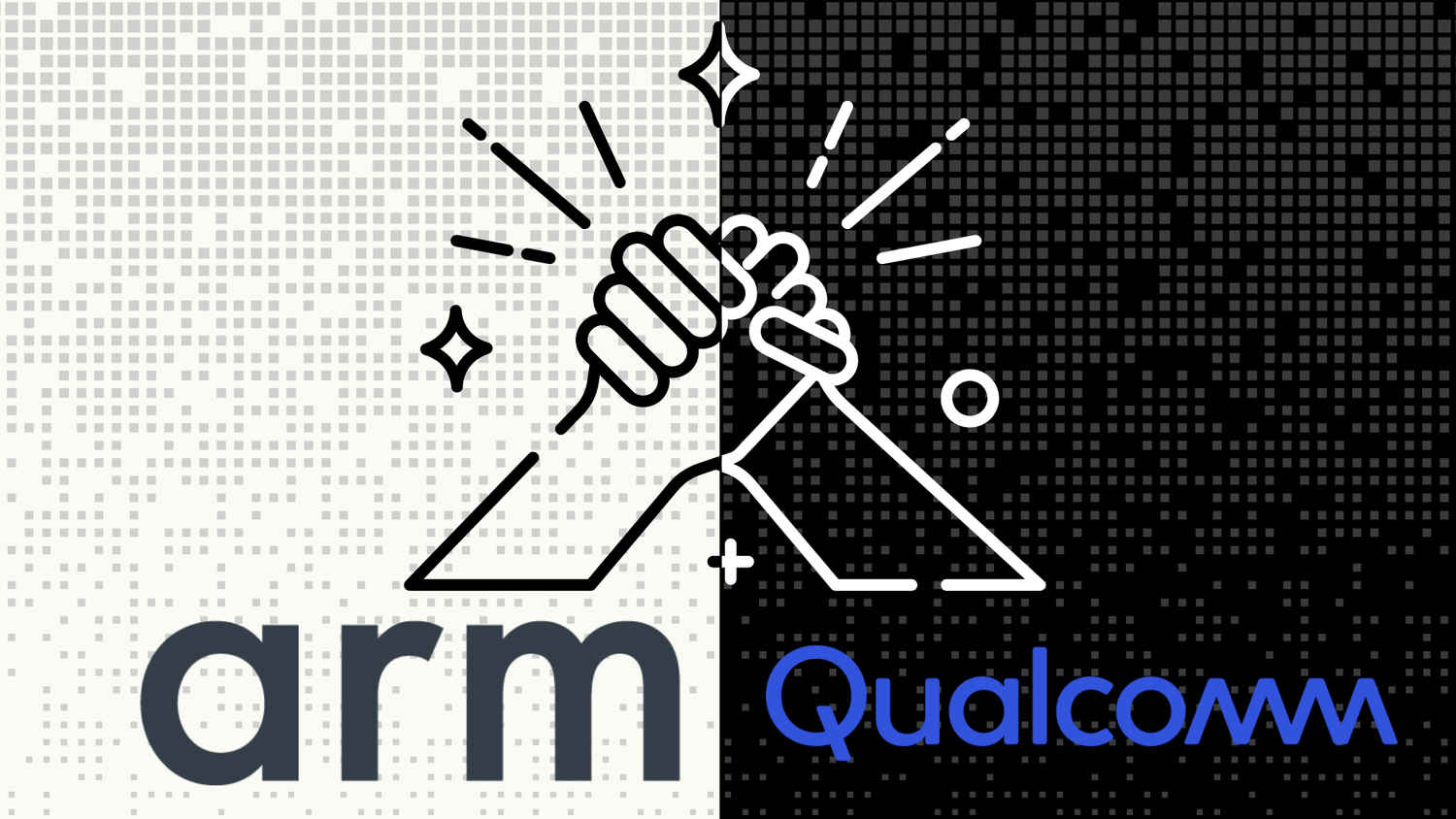ARM wrestling Qualcomm

In a move that has sent shockwaves through the semiconductor industry, ARM Holding has announced the cancellation of Qualcomm’s architectural licence agreement, effectively putting an end to Qualcomm’s ability to use ARM’s intellectual property to design its custom Oryon cores. While a lot has been said about this move jeopardising Qualcomm’s future products, it’s not just Qualcomm who’s set to lose out. There is a much bigger impact staring ARM in the face.
At the heart of this corporate schism lies a series of alleged breaches of the licensing agreement by Qualcomm. ARM contends that Qualcomm’s shift toward offering more complete chip designs encroaches upon Arm’s own business model, which traditionally revolves around licensing IP rather than directly competing with its own consumers. This feud reached a boiling point when Qualcomm began utilising its architectural licence to develop the Oryon cores, a move that Arm perceived as a direct threat to its core business.
The fact is that Qualcomm’s acquisition of Nuvia is what allowed Qualcomm to advance its custom design which now lies at the heart of the new Oryon cores. And Nuvia had its own set of licences from ARM. Moreover, this isn’t the first lawsuit against Qualcomm by ARM. There was another in 2022 when Arm suspected that Qualcomm was building its own custom designs. The key concern here being that by letting Qualcomm design custom cores using ARM’s instruction sets, ARM fears losing grip over the standardisation and uniformity that have been pivotal to its success in the mobile and embedded markets. The cancellation serves as both a punitive and protective measure, aiming to safeguard ARM’s interests while sending a message to other licensees contemplating similar paths.
So who stands to lose and who stands to gain? When you look at the SoC space for smartphones, MediaTek occupies a 40 per cent market share by units shipped followed by Qualcomm who has a 25 per cent market share. So it goes without saying that MediaTek could benefit a lot with ARM favouring it more than Qualcomm with regards to newer Core designs and instruction sets. That being said, there won’t be any short term upheaval because technology companies work on products years in advance. So there are already several generations of mobile SoCs for smartphones and laptops already planned. Intel and AMD could breathe a sigh of relief given that they’ve certainly been feeling the heat.
ARM needs to get Qualcomm to the table because if they don’t then the hundreds of other companies which rely on ARM designs could soon harbour similar dreams of building their own cores. Also, if this issue isn’t resolved properly, then these very companies might start exploring other architectures such as RISC-V as a safer and more flexible alternative.
Also Read: The ARM processors’ enterprise boom
As long as the supply-chain for the existing chips aren’t affected Qualcomm’s customers need not worry. There are numerous smartphone manufacturers and automobile manufacturers relying on a healthy supply of Qualcomm’s SoCs to ensure that their production lines stay on track.
Arm’s decision reflects a desire to maintain control over its technology and preserve its licensing business model. However, by taking such a hardline stance, Arm risks alienating key partners. The semiconductor industry thrives on collaboration and mutual dependencies. If companies perceive Arm as a litigious or restrictive partner, they may seek alternatives, undermining Arm’s market position in the long run. The December trial will be a critical juncture. If the court sides with Arm, Qualcomm will need to scramble to find alternative solutions, possibly delaying product launches and ceding market share. If Qualcomm prevails, it might embolden other licensees to push the boundaries of their agreements, further challenging Arm’s control.
In the short term, consumers might not notice significant changes. Devices powered by Qualcomm’s current chips will continue to function, and new product launches may proceed as planned. However, prolonged legal battles and market uncertainty could eventually lead to reduced innovation, higher costs, or delays in the availability of cutting-edge technology. On the other hand, a shift away from Arm architectures could fragment the software ecosystem. Developers might need to optimise applications for multiple architectures, increasing complexity and resource requirements. On the flip side, this could also drive the adoption of cross-platform solutions and more efficient coding practices.
In an industry where innovation and collaboration are intertwined, the Arm-Qualcomm feud serves as a stark reminder of the complexities of intellectual property, competitive strategy, and the ever-evolving quest for technological supremacy. The ultimate impact remains to be seen, but one thing is certain: the semiconductor landscape is on the cusp of significant change.
Mithun Mohandas
Mithun Mohandas is an Indian technology journalist with 10 years of experience covering consumer technology. He is currently employed at Digit in the capacity of a Managing Editor. Mithun has a background in Computer Engineering and was an active member of the IEEE during his college days. He has a penchant for digging deep into unravelling what makes a device tick. If there's a transistor in it, Mithun's probably going to rip it apart till he finds it. At Digit, he covers processors, graphics cards, storage media, displays and networking devices aside from anything developer related. As an avid PC gamer, he prefers RTS and FPS titles, and can be quite competitive in a race to the finish line. He only gets consoles for the exclusives. He can be seen playing Valorant, World of Tanks, HITMAN and the occasional Age of Empires or being the voice behind hundreds of Digit videos. View Full Profile




